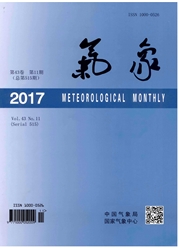

 中文摘要:
中文摘要:
运用耦合了化学模块的中尺度数值模式WRF/Chem和自NCAR引进的人类污染物排放源数据对北京地区2012年8月31日污染天气过程的特征进行了数值模拟,结果表明模拟的臭氧(O3)浓度具有明显的日变化特征。高、低峰值分别出现在午后和夜间,空间分布与流场有一定关系;PM2.5也存在日变化,但空间分布相对稳定,高值主要聚集在城区;局地污染物具有水平输送特征,但因总量为零,并未加重污染物的局地聚集;来自北京南部的远距离输送足这次污染物的主要米源之一。敏感性试验分析发现,这次过程的O3污染主要来源于北京之外的外源输送,而细颗粒物主要来源于本地生成;O3污染对前体物(NOx)的敏感性比较平稳,对挥发性有机物的敏感性起伏较大,凌晨至上午最为明显。
 英文摘要:
英文摘要:
The WRF/Chem model coupled with anthropogenic atmospheric pollution emission data from NCAR is used to simulate characteristics of one pollution event in Beijing on 31 August 2012. The results show that ozone (O3) concentrations have obvious diurnal variation characteristics. The high and low peaks appear in the afternoon and night respectively. The spatial distribution and flow field are related. PM2.5 also has the diurnal variation, but the spatial distribution is relatively stable and mainly in urban are as. Local pollutants have horizontal transport characteristics but the total amount is about zero, and it has not increased the local accumulation of pollutants. Long distance transportation from southern Beijing is one of the main sources of the pollutant. Sensitivity test analysis shows that the Oa pollution of the process is mainly from Beijing, and the fine particles are mainly generated locally. The sensitivity of O3 pollution to the nitrogen oxide (NOx) is relatively stable, but varies greatly to volatile organic compounds, especially from wee hours to morning.
 同期刊论文项目
同期刊论文项目
 同项目期刊论文
同项目期刊论文
 期刊信息
期刊信息
